-
 Bitcoin
Bitcoin $117500
2.15% -
 Ethereum
Ethereum $3911
6.19% -
 XRP
XRP $3.316
10.79% -
 Tether USDt
Tether USDt $1.000
0.01% -
 BNB
BNB $787.2
2.24% -
 Solana
Solana $175.2
4.15% -
 USDC
USDC $0.9999
0.00% -
 Dogecoin
Dogecoin $0.2225
8.40% -
 TRON
TRON $0.3383
0.28% -
 Cardano
Cardano $0.7868
6.02% -
 Stellar
Stellar $0.4382
9.34% -
 Hyperliquid
Hyperliquid $40.92
7.56% -
 Sui
Sui $3.764
7.63% -
 Chainlink
Chainlink $18.48
10.66% -
 Bitcoin Cash
Bitcoin Cash $582.1
1.88% -
 Hedera
Hedera $0.2601
6.30% -
 Avalanche
Avalanche $23.33
4.94% -
 Ethena USDe
Ethena USDe $1.001
0.02% -
 Litecoin
Litecoin $122.3
2.04% -
 UNUS SED LEO
UNUS SED LEO $8.969
-0.27% -
 Toncoin
Toncoin $3.339
0.86% -
 Shiba Inu
Shiba Inu $0.00001287
4.30% -
 Uniswap
Uniswap $10.43
7.38% -
 Polkadot
Polkadot $3.861
5.08% -
 Dai
Dai $1.000
0.02% -
 Bitget Token
Bitget Token $4.513
3.41% -
 Monero
Monero $267.7
-6.18% -
 Cronos
Cronos $0.1499
4.14% -
 Pepe
Pepe $0.00001110
5.15% -
 Aave
Aave $284.9
8.28%
How to avoid slippage in Crypto.com contract trading? How to use the slippage protection function?
Slippage in Crypto.com contract trading is the difference between expected and executed trade prices; use slippage protection to set a max acceptable slippage percentage.
May 02, 2025 at 12:57 pm
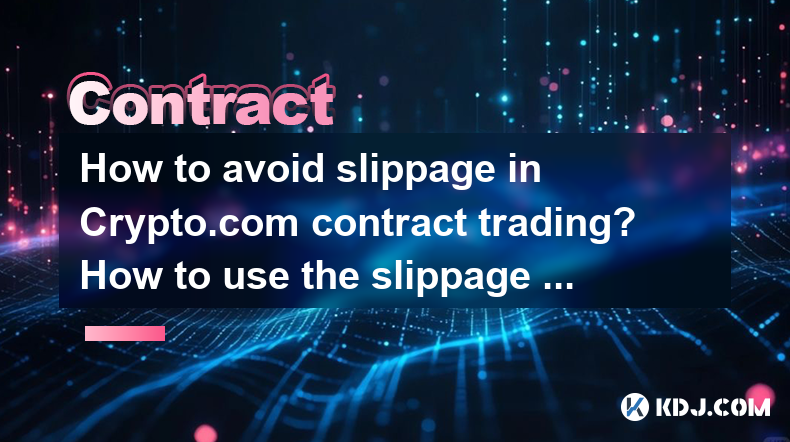
Understanding Slippage in Crypto.com Contract Trading
Slippage is a common occurrence in cryptocurrency trading, particularly in contract trading on platforms like Crypto.com. It refers to the difference between the expected price of a trade and the price at which the trade is actually executed. This can happen due to market volatility, high trading volumes, or delays in order execution. In Crypto.com contract trading, managing slippage effectively can significantly impact your trading performance.
Importance of Slippage Protection
Slippage protection is a critical feature offered by Crypto.com to help traders minimize the adverse effects of slippage. This function allows traders to set a maximum acceptable slippage percentage for their orders. If the market moves beyond this set percentage, the order will not be executed, thus protecting the trader from unfavorable price movements. Understanding how to use this feature can enhance your trading strategy and protect your investments.
How to Enable Slippage Protection on Crypto.com
To utilize the slippage protection function on Crypto.com, follow these detailed steps:
- Open the Crypto.com App: Launch the Crypto.com app on your mobile device or access the platform via the web.
- Navigate to Contract Trading: Go to the trading section and select 'Contract Trading' from the menu.
- Choose Your Trading Pair: Select the cryptocurrency pair you wish to trade.
- Access Order Settings: Before placing your order, tap on the settings icon or the advanced settings option.
- Enable Slippage Protection: Look for the 'Slippage Protection' or 'Max Slippage' setting. Toggle it on.
- Set the Slippage Percentage: Enter the maximum percentage of slippage you are willing to accept. For example, if you set it to 1%, your order will only execute if the price movement is within 1% of your specified price.
- Place Your Order: With the slippage protection enabled, proceed to place your order as usual.
Strategies to Avoid Slippage in Contract Trading
While slippage protection is a valuable tool, there are additional strategies you can employ to minimize slippage in your Crypto.com contract trading:
- Trade During Low Volatility Periods: Slippage is more likely to occur during times of high market volatility. By trading during quieter periods, you can reduce the risk of significant price movements.
- Use Limit Orders: Instead of using market orders, opt for limit orders. Limit orders allow you to specify the exact price at which you want your trade to be executed, reducing the risk of slippage.
- Monitor Market Depth: Before placing a large order, check the order book to understand the market depth. This can give you insights into potential price movements and help you set a more realistic slippage tolerance.
- Avoid Trading on News Releases: Major news events can cause sudden and significant price swings. If possible, avoid trading immediately before or after such events to minimize the risk of slippage.
Adjusting Slippage Settings Based on Market Conditions
The effectiveness of slippage protection can vary depending on market conditions. It's essential to adjust your slippage settings accordingly:
- In a Stable Market: You might set a lower slippage percentage, such as 0.5%, since price movements are less likely to be drastic.
- During High Volatility: Increase your slippage tolerance to a higher percentage, such as 2% or 3%, to ensure your orders can still be executed during rapid price changes.
- For Large Orders: If you are placing a large order that could impact the market, consider setting a higher slippage percentage to account for potential price shifts caused by your own order.
Common Mistakes to Avoid When Using Slippage Protection
To maximize the benefits of slippage protection, be aware of these common pitfalls:
- Setting Slippage Too Low: If your slippage tolerance is set too low, your orders may not execute during volatile market conditions, causing you to miss trading opportunities.
- Ignoring Market Conditions: Failing to adjust your slippage settings based on current market conditions can lead to missed trades or unnecessary slippage.
- Overlooking Order Types: Using market orders instead of limit orders can increase the risk of slippage, even with protection enabled.
Frequently Asked Questions
Q: Can slippage protection guarantee that my order will be executed at my desired price?
A: No, slippage protection cannot guarantee execution at your desired price. It only ensures that your order will not be executed if the slippage exceeds your set percentage. If the market moves beyond your tolerance, your order will remain unfilled.
Q: How often should I adjust my slippage settings?
A: You should review and adjust your slippage settings regularly, especially when market conditions change. Monitoring market volatility and adjusting your settings accordingly can help optimize your trading strategy.
Q: Does enabling slippage protection slow down the order execution process?
A: Enabling slippage protection may slightly delay order execution as the system checks for compliance with your set slippage tolerance. However, this delay is usually minimal and is outweighed by the protection it offers against unfavorable price movements.
Q: Can I use slippage protection for all types of orders on Crypto.com?
A: Slippage protection is typically available for limit orders and some types of stop orders. It may not be applicable to market orders, as they are executed at the best available price at the time of submission. Always check the specific order types supported by Crypto.com for slippage protection.
Disclaimer:info@kdj.com
The information provided is not trading advice. kdj.com does not assume any responsibility for any investments made based on the information provided in this article. Cryptocurrencies are highly volatile and it is highly recommended that you invest with caution after thorough research!
If you believe that the content used on this website infringes your copyright, please contact us immediately (info@kdj.com) and we will delete it promptly.
- Stablecoins, Hong Kong, and On-Chain Finance: Navigating the Regulatory Maze
- 2025-08-08 12:30:12
- Tron's Sell-Off Spurs Altcoin Shift: What's Next for TRX?
- 2025-08-08 08:30:12
- Euler, DeFi, and Coinbase: A New York Minute on the Latest Buzz
- 2025-08-08 12:30:12
- RUVI Presale: Is the Growth Potential Real?
- 2025-08-08 09:10:12
- Sleep Token's US Takeover: Thornhill Rides the 'Even In Arcadia' Wave
- 2025-08-08 08:30:12
- FTT Token's Wild Ride: Creditor Repayments vs. Market Drop - A New Yorker's Take
- 2025-08-08 07:10:12
Related knowledge

What are the specific maker and taker fees on KuCoin Futures?
Aug 08,2025 at 08:28am
Understanding Maker and Taker Fees on KuCoin FuturesWhen trading on KuCoin Futures, users encounter two primary types of fees: maker fees and taker fe...

What is the maximum leverage available on KuCoin Futures?
Aug 08,2025 at 10:21am
Understanding Leverage in KuCoin Futures TradingLeverage in KuCoin Futures allows traders to control a larger position size using a smaller amount of ...
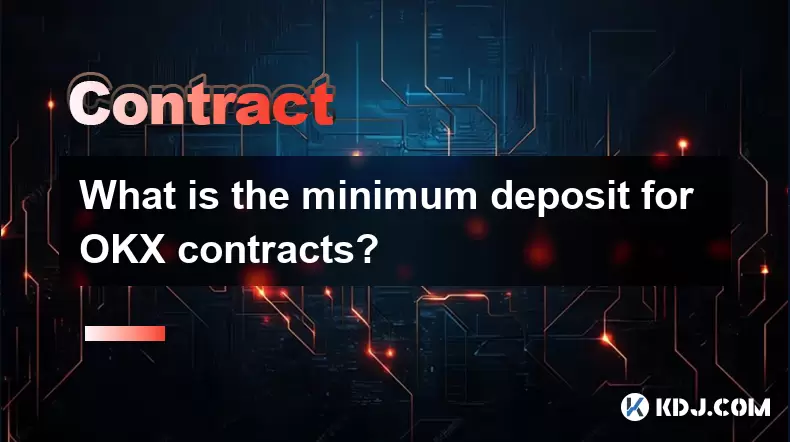
What is the minimum deposit for OKX contracts?
Aug 08,2025 at 07:00am
Understanding OKX Contract Trading BasicsOKX is one of the leading cryptocurrency derivatives exchanges, offering a wide range of perpetual and future...
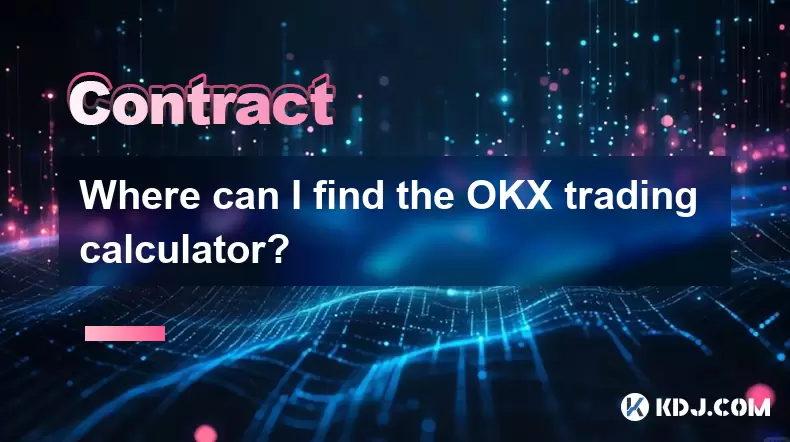
Where can I find the OKX trading calculator?
Aug 08,2025 at 07:49am
Understanding the OKX Trading Calculator FunctionalityThe OKX trading calculator is a powerful analytical tool designed to assist traders in estimatin...
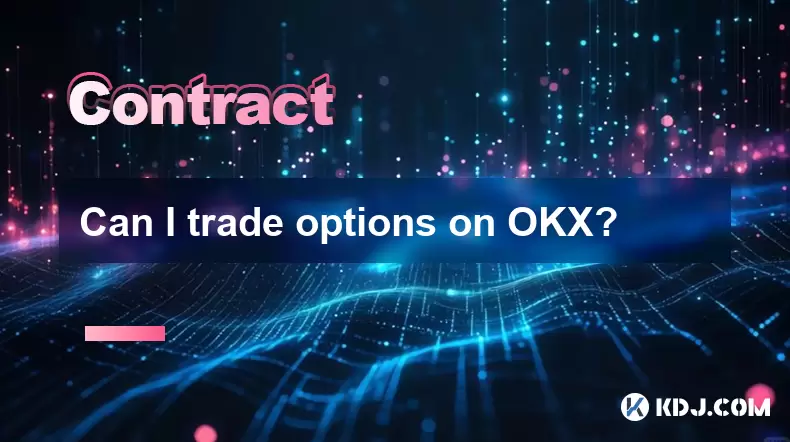
Can I trade options on OKX?
Aug 08,2025 at 11:01am
Understanding Options Trading on OKXYes, you can trade options on OKX. OKX is one of the leading cryptocurrency derivatives exchanges that offers a de...
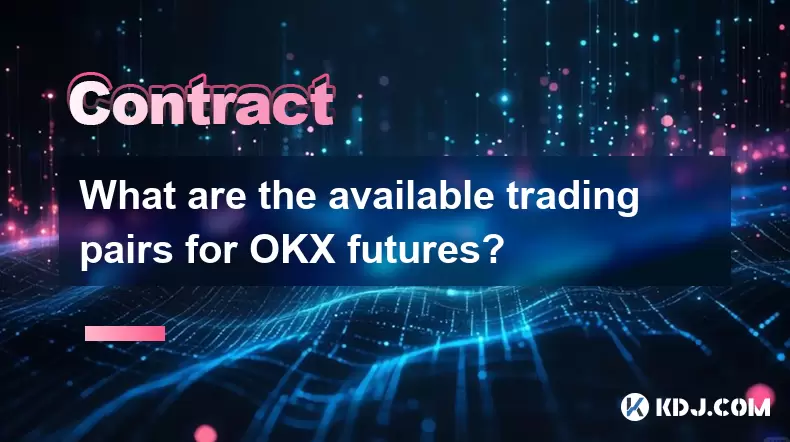
What are the available trading pairs for OKX futures?
Aug 08,2025 at 08:49am
Understanding OKX Futures Trading PairsOKX is one of the leading cryptocurrency derivatives exchanges, offering a wide range of futures trading pairs ...

What are the specific maker and taker fees on KuCoin Futures?
Aug 08,2025 at 08:28am
Understanding Maker and Taker Fees on KuCoin FuturesWhen trading on KuCoin Futures, users encounter two primary types of fees: maker fees and taker fe...

What is the maximum leverage available on KuCoin Futures?
Aug 08,2025 at 10:21am
Understanding Leverage in KuCoin Futures TradingLeverage in KuCoin Futures allows traders to control a larger position size using a smaller amount of ...

What is the minimum deposit for OKX contracts?
Aug 08,2025 at 07:00am
Understanding OKX Contract Trading BasicsOKX is one of the leading cryptocurrency derivatives exchanges, offering a wide range of perpetual and future...

Where can I find the OKX trading calculator?
Aug 08,2025 at 07:49am
Understanding the OKX Trading Calculator FunctionalityThe OKX trading calculator is a powerful analytical tool designed to assist traders in estimatin...

Can I trade options on OKX?
Aug 08,2025 at 11:01am
Understanding Options Trading on OKXYes, you can trade options on OKX. OKX is one of the leading cryptocurrency derivatives exchanges that offers a de...

What are the available trading pairs for OKX futures?
Aug 08,2025 at 08:49am
Understanding OKX Futures Trading PairsOKX is one of the leading cryptocurrency derivatives exchanges, offering a wide range of futures trading pairs ...
See all articles

























































































